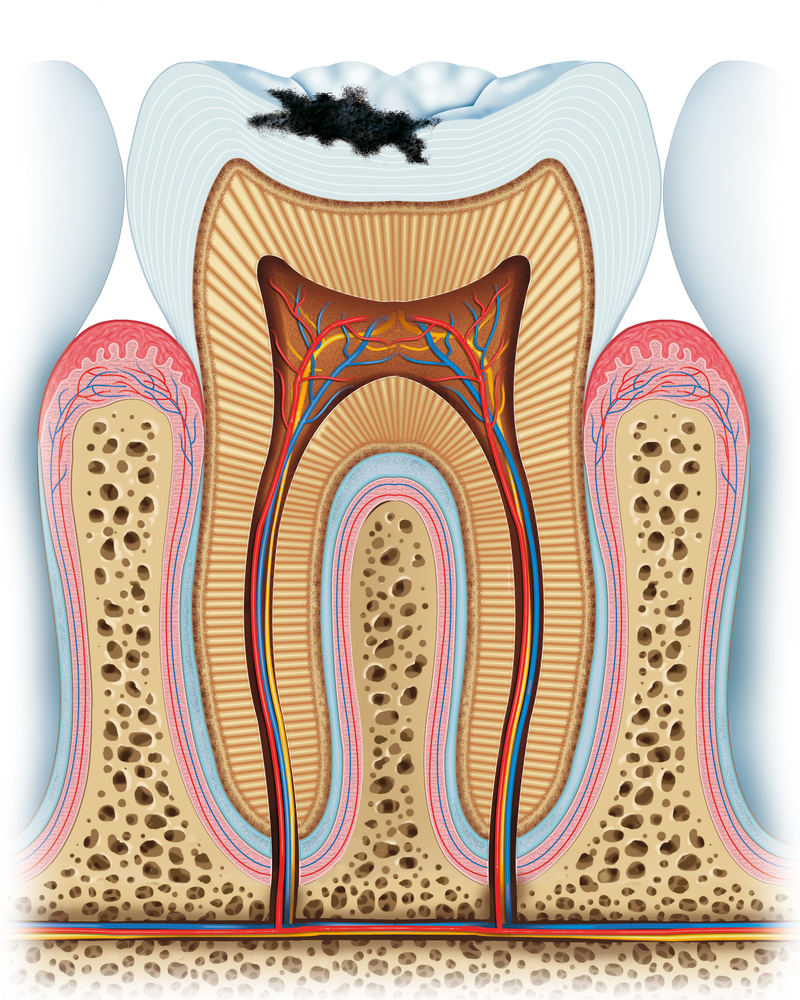
Tooth decay is defined by the deterioration of the tooth due to a buildup of bacteria. It usually starts on the outside of the tooth and then makes its way into the dentin and pulp of the tooth.
There are different stages of tooth decay and signs that it is developing. The good news is that if it is addressed early on, it may be possible to reverse the damage and avoid developing a cavity that requires a filling.
What Is Tooth Decay?
There are three main parts of a tooth:
- The enamel on the outside of the tooth or what we see when we smile
- The dentin just below the enamel
- The pulp in the inside of the tooth that contains the nerve endings
All of these extend down to the roots of the tooth, and decay can damage all of them.
In most cases, decay begins in the enamel, either between the teeth or on top of the tooth. It begins to break down the tooth from the outside in, often causing pain at its worst.
Tooth decay occurs when flossing and brushing are irregular, or the person eats a lot of foods that have sugar or break down the enamel, encouraging tooth decay.
What Are the Signs of Tooth Decay?
Tooth decay starts as a white spot on the enamel. Hard to see with the naked eye due to the fact that the enamel is white, it can be spotted by a dentist during a routine six-month checkup.
Should the white spot go unnoticed or be allowed to progress, there may be pain, a crack in the tooth, or both.
What Are the Stages of Tooth Decay?
There are five stages of tooth decay.
- Stage 1: Enamel starts to break down.
- Stage 2: The enamel has deteriorated to the point that decay is visible.
- Stage 3: The decay invades the dentin just below the enamel.
- Stage 4: Damage to the pulp beneath the dentin begins.
- Stage 5: An abscess occurs in the tooth.
Can You Reverse Tooth Decay?
If tooth decay is caught in stage 1 when it is little more than a white or sticky spot on the tooth, it may be possible to reverse the damage.
Focus on brushing, flossing, using medicated mouthwashes, and choosing professional toothpastes. Using a water flosser or electric toothbrush may be recommended to ensure that no bacteria is allowed to stay in the area for any period of time.
Beyond stage 1, once there is real decay in the enamel or if the decay has extended down to the dentin or pulp, there is no chance of reversal.
What Are Options for Tooth Decay Treatment?
Tooth decay may be treated with a “wait and see” approach, pending further brushing and dental care, but if it is more serious, having the tooth drilled and filled may be required. Very serious tooth decay may require tooth removal.
If you believe you need treatment for tooth decay, contact us at Dison Family Dentistry today.
